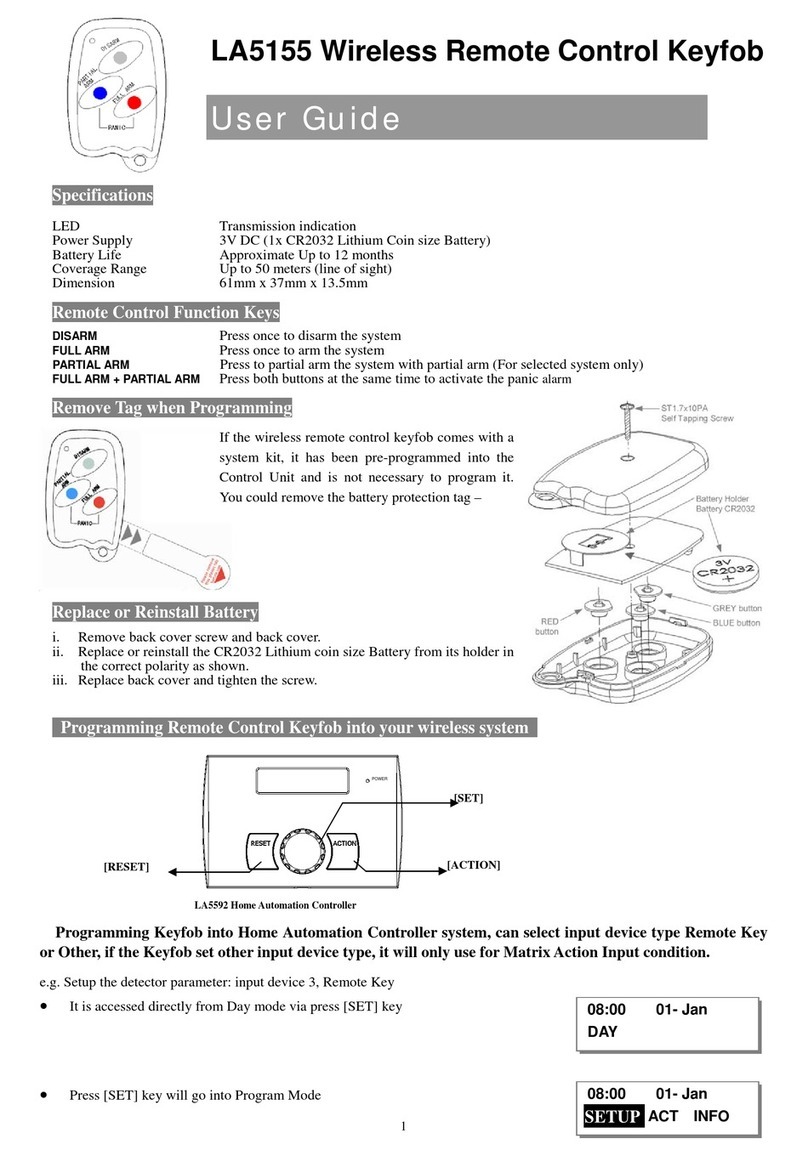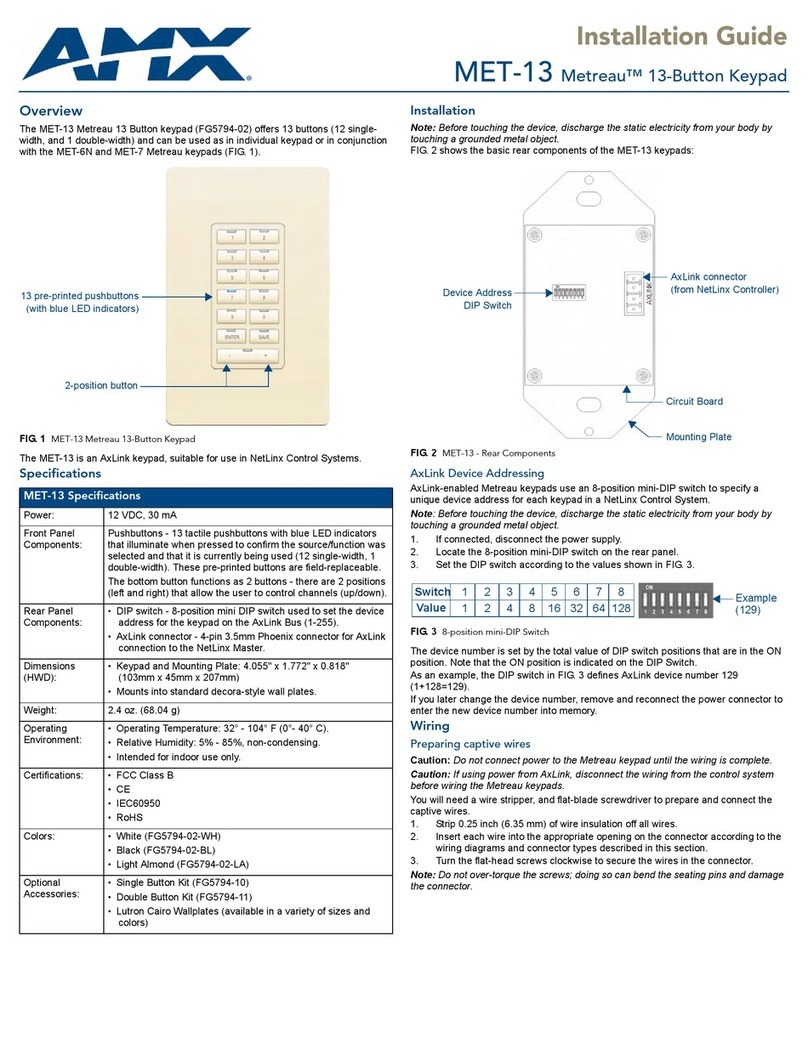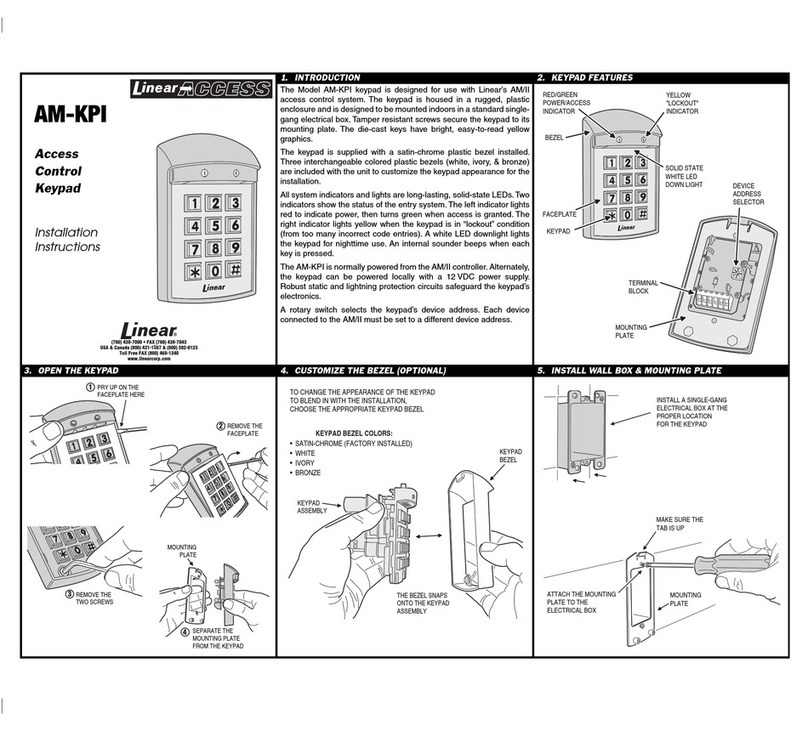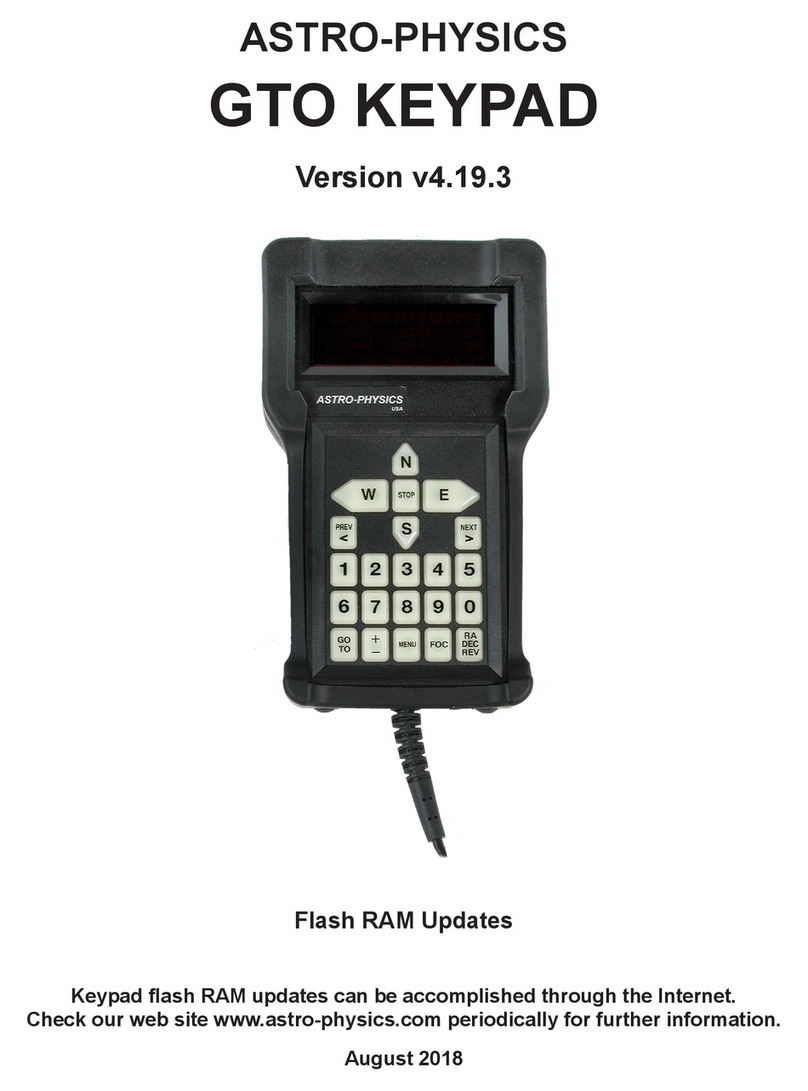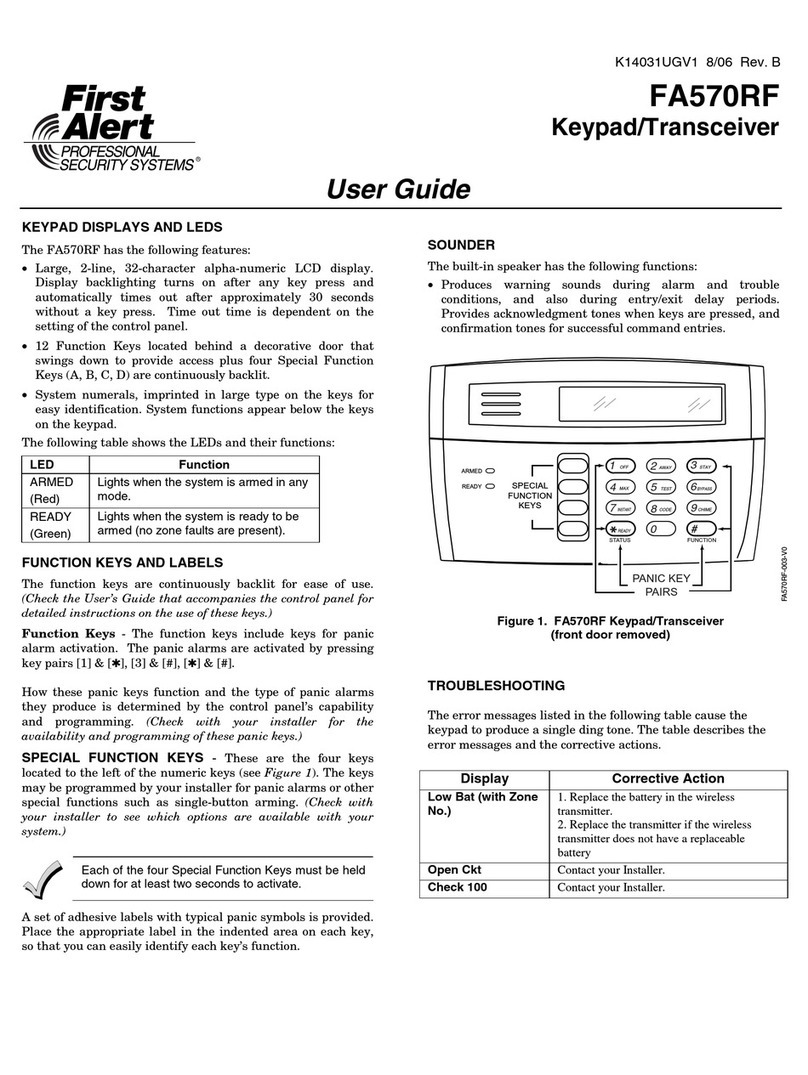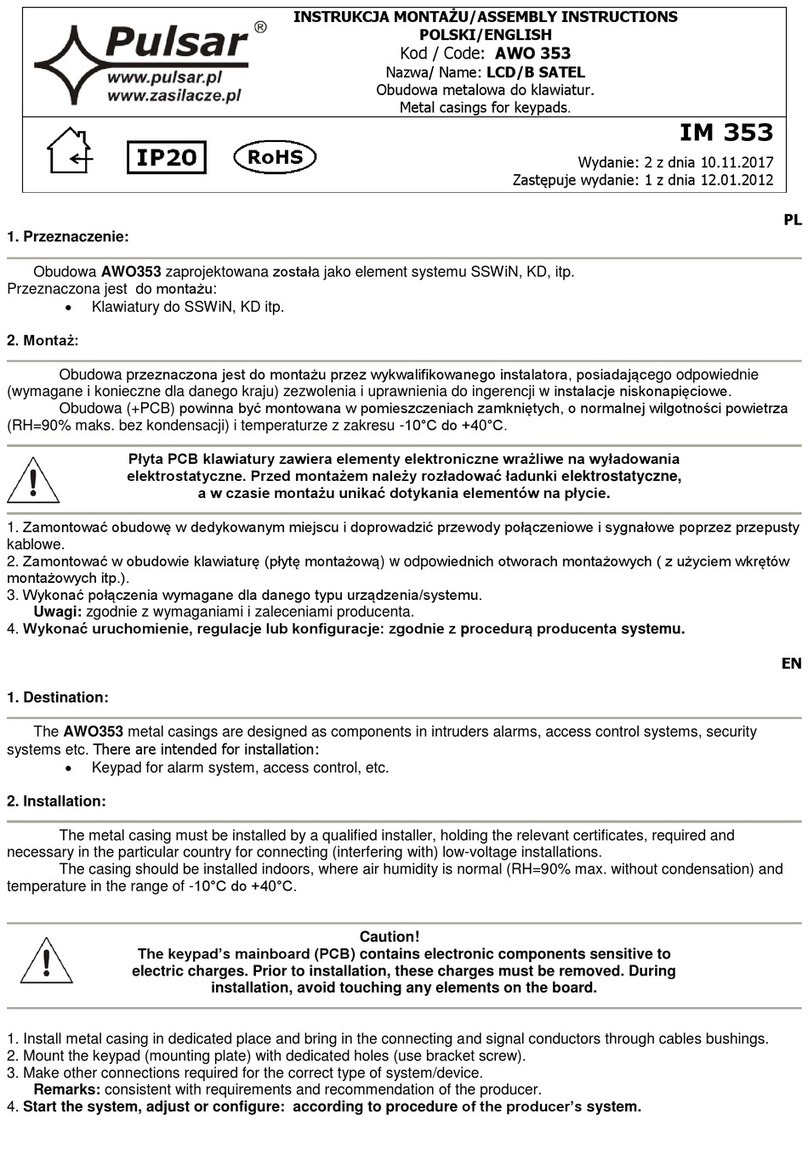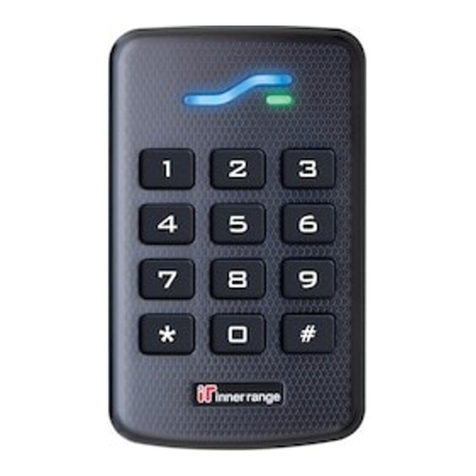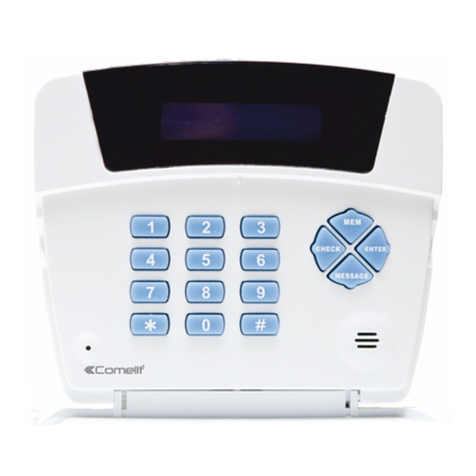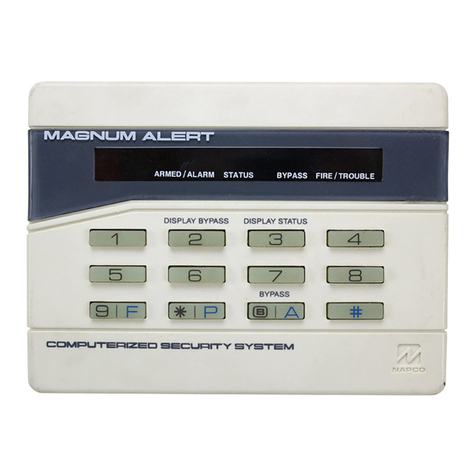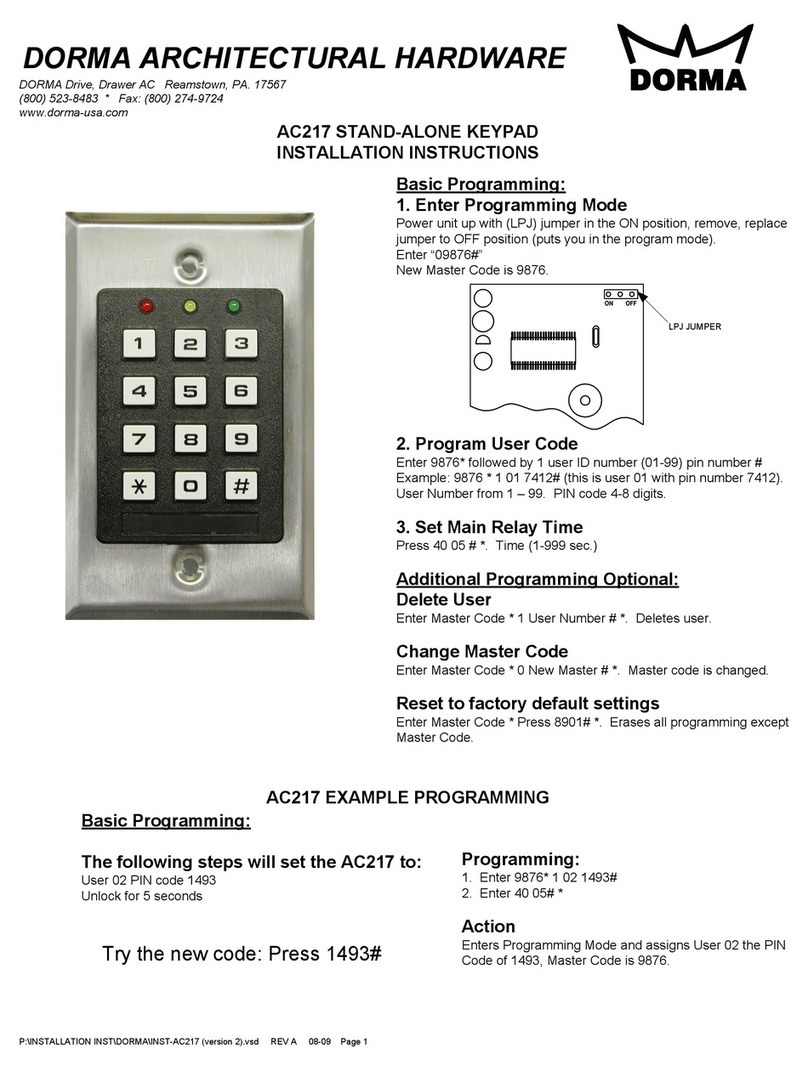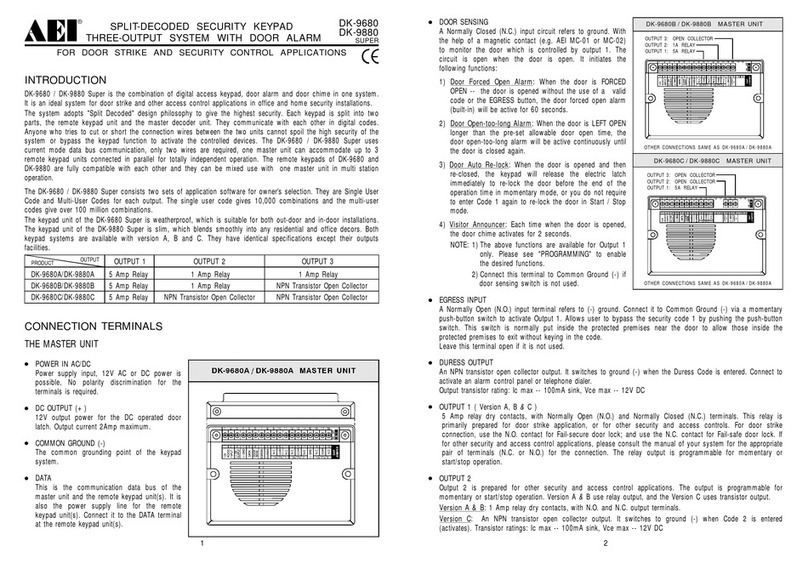Rockwell Automation Allen-Bradley RediPANEL 2705 User manual

-~
ARTISAN
®
~I
TECHNOLOGY
GROUP
Your definitive source
for
quality
pre-owned
equipment.
Artisan Technology
Group
Full-service,
independent
repair
center
with
experienced
engineers
and
technicians
on staff.
We
buy
your
excess,
underutilized,
and
idle
equipment
along
with
credit
for
buybacks
and
trade-ins
.
Custom
engineering
so
your
equipment
works
exactly as
you
specify.
•
Critical
and
expedited
services
•
Leasing
/
Rentals/
Demos
• In
stock/
Ready-to-ship
•
!TAR-certified
secure
asset
solutions
Expert
team
ITrust
guarantee
I
100%
satisfaction
All
tr
ademarks,
br
a
nd
names, a
nd
br
a
nd
s a
pp
earing here
in
are
th
e property of
th
e
ir
r
es
pecti
ve
ow
ner
s.
Find the Rockwell / Allen-Bradley 2705-K11C1 at our website: Click HERE

User
Manual
Bulletin 2705
RediPANEL
Keypad
Modules
(Cat. Nos. 2705-K11C1,
-K11C2, -K12C2, -K12C3,
-K12C4)
Allen-Bradley
Artisan Technology Group - Quality Instrumentation ... Guaranteed | (888) 88-SOURCE | www.artisantg.com

Solid state equipment has operational characteristics differing from those of
electromechanical equipment. “Safety Guidelines for the Application,
Installation and Maintenance of Solid State Controls” (Publication SGI-1.1)
describes some important differences between solid state equipment and
hard–wired electromechanical devices. Because of this difference, and also
because of the wide variety of uses for solid state equipment, all persons
responsible for applying this equipment must satisfy themselves that each
intended application of this equipment is acceptable.
In no event will the Allen-Bradley Company be responsible or liable for
indirect or consequential damages resulting from the use or application of
this equipment.
The examples and diagrams in this manual are included solely for illustrative
purposes. Because of the many variables and requirements associated with
any particular installation, the Allen-Bradley Company cannot assume
responsibility or liability for actual use based on the examples and diagrams.
No patent liability is assumed by Allen-Bradley Company with respect to use
of information, circuits, equipment, or software described in this manual.
Reproduction of the contents of this manual, in whole or in part, without
written permission of the Allen-Bradley Company is prohibited.
Throughout this manual we use notes to make you aware of safety
considerations.
!ATTENTION: Identifies information about practices or
circumstances that can lead to personal injury or death, property
damage, or economic loss.
Attentions help you:
•identify a hazard
•avoid the hazard
•recognize the consequences
Important: Identifies information that is especially important for successful
application and understanding of the product.
PLC is a registered trademark of Allen-Bradley Company, Inc.
Pyramid Integrator, DTL and CVIM are trademarks of Allen-Bradley Company, Inc.
VAX is registered trademark of Digital Equipment Corporation.
Important User Information
Artisan Technology Group - Quality Instrumentation ... Guaranteed | (888) 88-SOURCE | www.artisantg.com

A–B
RediPANEL Keypad Modules
User Manual
Table of Contents
i
Chapter 1
Chapter Objectives 1–1. . . . . . . . . . . . . . . . . . . . . . . . . . . . . . . . . . . . . . . . .
What this Manual Contains 1–1. . . . . . . . . . . . . . . . . . . . . . . . . . . . . . . . . .
Audience 1–2. . . . . . . . . . . . . . . . . . . . . . . . . . . . . . . . . . . . . . . . . . . . . . . .
Reference Materials 1–2. . . . . . . . . . . . . . . . . . . . . . . . . . . . . . . . . . . . . . . .
Definition of Terms 1–2. . . . . . . . . . . . . . . . . . . . . . . . . . . . . . . . . . . . . . . .
Chapter 2
Chapter Objectives 2–1. . . . . . . . . . . . . . . . . . . . . . . . . . . . . . . . . . . . . . . . .
Features 2–1. . . . . . . . . . . . . . . . . . . . . . . . . . . . . . . . . . . . . . . . . . . . . . . . .
Functions 2–1. . . . . . . . . . . . . . . . . . . . . . . . . . . . . . . . . . . . . . . . . . . . . . . .
Applications 2–2. . . . . . . . . . . . . . . . . . . . . . . . . . . . . . . . . . . . . . . . . . . . . .
Operator Data Input 2–3. . . . . . . . . . . . . . . . . . . . . . . . . . . . . . . . . . . . . . . .
Information Display 2–3. . . . . . . . . . . . . . . . . . . . . . . . . . . . . . . . . . . . . . . .
Remote I/O Communications 2–3. . . . . . . . . . . . . . . . . . . . . . . . . . . . . . . .
Chapter 3
Chapter Objectives 3–1
Electrical Precautions 3–1
Power Requirements 3–1
Grounding 3–2
NEMA Enclosures 3–2
Mechanical Installation 3–3
Connecting to a Remote I/O Link 3–5
Connecting to a Scanner Module 3–6
Chapter Objectives 11–12. . . . . . . . . . . . . . . . . . . . . . . . . . . . . . . . . . . . . . . . .
SET AUTORUN? Entering the Special Functions Menu,
SET PORT? 1–12. . . . . . . . . . . . . . . . . . . . . . . . . . . . . . . . . . . . . . . . . . .
Chapter 4
Chapter Objectives 4–1
Communications 4–1
Remote I/O Architecture 4–2
Compatible PLC’s and Scanners 4–5
Calculating Rack Size 4–7
Remote I/O Configuration 4–8
Using this Manual
Product Introduction
Installing the Bulletin 2705
Keypad Module
C
on
fi
gur
i
ng
the
B
ullet
i
n
2705
Keypad Module with PLC’s
Artisan Technology Group - Quality Instrumentation ... Guaranteed | (888) 88-SOURCE | www.artisantg.com

RediPANEL Keypad Module
User Manual
Table of Contents
ii
Chapter 5
Chapter Objectives 5–1
DIP Switches 5–1
Typical Switch Settings 5–2
Setting Switch Bank #1 5–2
Setting Switch Bank #2 5–4
Setting Switch Bank #3 5–5
Chapter 6
Chapter Objectives 6–1
Keypad Output Display 6–1
Numeric Data 6–2
ASCII Data 6–2
Display Stored Message 6–2
ASCII Message Display 6–2
Data Entry 6–3
Split Display 6–4
Decimal Modes 6–4
Polarity 6–4
Destination Entry 6–4
Messages 6–5
Keyboard 6–6
Entering Messages 6–7
Storing 6–7
Editing 6–7
Editing Commands 6–8
Chapter 7
Chapter Objectives 7–1
Introduction to Programming with the Keypad
Module 7–1
PLC–5 Programming Examples 7–2
System Configuration 7–2
Input and Output Image Tables 7–3
Displaying Numeric Data 7–4
Triggering a Stored Message to Describe Data 7–5
Displaying a Full Line Stored Message 7–6
Entering or Changing Data with the Keypad
Module 7–7
Using the Destination Function to Load Multiple
Timer Presets 7–9
Using PLC–5’s and a Sub I/O Scanner with Keypad Modules 7–11
Sele
c
t
i
ng
O
pt
i
ons
Operating Modes
Programming
Artisan Technology Group - Quality Instrumentation ... Guaranteed | (888) 88-SOURCE | www.artisantg.com

RediPANEL Keypad Module
User Manual
Table of Contents
iii
Instruction Parameters 7–12
Programming Example 7–13
Programming Example 7–15
PLC–2 Programming Example 7–16
PLC–2 Example Program 7–17
Program Set–up 7–19
Part A: Changing and Examining Accumulated
Value of Counter for PLC–2 7–21
Part B: Changing and Examining Preset Value of
Counter for PLC–2 7–22
Part C: Displaying a 16–Character Message for
PLC–2 7–23
Part D: Displaying Message and Variable Data
Simultaneously for PLC–2 7–24
Part E: Using Destination Bits to Retrieve or
Change Data for PLC–2 7–24
Symbols and Abbreviations for I/O Image Tables 7–25
Decimal Point Control 7–26
When to Use the Handshake Mode 7–28
Input and Output Image Tables 7–30
Integer Data – With Stored Message 7–30
BCD Data – With Stored Message 7–31
Binary Data – With Stored Message 7–32
Integer Data – No Stored Message 7–33
BCD Data – No Stored Message 7–35
Binary Data – No Stored Message 7–37
Chapter 8
Chapter Objectives 8–1
Using the Comm/Fault LED Indicators 8–1
Power–up Sequence Error Message Display 8–2
Basic Troubleshooting Questions 8–3
Chapter 9
Chapter Objectives 9–1
Specifications 9–1
A
Error Messages A–1
Display Characters A–3
Index I–1. . . . . . . . . . . . . . . . . . . . . . . . . . . . . . . . . . . . . . . . . . . . . . . . . . . . . .
Maintenance and
Troubleshooting
Specifications
Appendix
Artisan Technology Group - Quality Instrumentation ... Guaranteed | (888) 88-SOURCE | www.artisantg.com

1
Chapter
1–1
Using this Manual
This chapter describes the manual’s organization, intended audience, and
special terminology.
This manual describes the equipment, communication protocol, command
structure, installation, operation, troubleshooting, and specifications for the
Allen–Bradley Bulletin 2705 RediPANELKeypad Modules (Catalog
Numbers: 2705–K11C1, –K11C2, –K12C2, –K12C3, –K12C4).
You will want to study this manual before installing, interconnecting, or
operating the Keypad Module.
Table 1.A shows the manual’s organization.
Chapter Title Purpose
1Using this Manual Gives guidance on how to use this
manual properly.
2Product Introduction Describes Keypad features and
functions.
3Installing the
Keypad Module
Describes electrical, power and
grounding requirements, gives
procedures for connecting to
remote I/O links and scanners.
4Configuring the
Keypad Module
with PLC’s
Provides communication and
configuration parameters as well
as application considerations.
5Selecting Options Describes DIP switch settings.
6Operating Modes Explains data input and display
modes, and message entering,
editing and storing.
7 Programming Describes programming, explains
sample program, and lists
input/output image tables.
8Maintenance and
Troubleshooting Covers basic troubleshooting
questions, LED displays, and
power–up sequence.
9 Specifications Lists the design and operating
specifications for the Module.
Chapter Objectives
What this Manual Contains
Artisan Technology Group - Quality Instrumentation ... Guaranteed | (888) 88-SOURCE | www.artisantg.com

Chapter 1
Using this Manual
1–2
To get maximum benefit from this manual and the best use of the Bulletin
2705 Keypad Module in your system, you must be able to operate and
program an Allen–Bradley Programmable Logic Controller (PLC) or Small
Logic Controller (SLC).
We make reference in this manual to several other publications. They are:
•Allen–Bradley Publication 1770–4.1 (for grounding and wiring
guidelines).
•National Electrical Code published by the National Fire Protection
Association of Boston, Massachusetts (wire sizes and types for grounding
electrical equipment)
•Programmable Controller and scanner module literature. Refer to page
4–6 for publication numbers.
•Bulletin 2705 Keypad Programming Software User’s Manual
We use the following terms and acronyms in this manual:
Keypad Module -Allen–Bradley Bulletin 2705 RediPANEL Keypad
Modules (Catalog Numbers: 2705–K11C1, –K11C2,
–K12C2, –K12C3, –K12C4)
PLC Programmable Logic Controller
SLC Small Logic Controller
Audience
Reference Materials
Definition of Major Terms
Artisan Technology Group - Quality Instrumentation ... Guaranteed | (888) 88-SOURCE | www.artisantg.com

A–B 2
Chapter
2–1
Product Introduction
This chapter describes the features, functions and operation of the Bulletin
2705 RediPANEL Keypad Module.
The Bulletin 2705 RediPANEL Keypad Module is an operator module that
connects directly to an Allen–Bradley PLC via the remote I/O link. It
provides the capability for operators to input data to and retrieve data from
the PLC. It also functions as a single line message display. The Keypad
Module supports the following features:
•Sixteen character alphanumeric display
•Numeric keypad with keys for DELETE, ENTER, Decimal and Polarity
•Six programmable function keys with six programmable LED indicators
•Remote I/O networking. Up to 16 modules can be located along a single
cable up to 10,000 feet away from the PLC
•On–board message storage and message editor
•NEMA Type 4X rating when panel mounted (indoor use only)
•Security keyswitch
•Security keyswitch option
•Complete diagnostics
•Binary, BCD and integer data types
•Power Source 90–265 Volts AC or 18–30 Volts DC
•Power Source 120/240 Volts AC or 18–30 Volts DC
•UL listed Class I; Division 2 versions available
•Additional data access with Destination Function
•IBM based Keypad Programming Software
•Replaces multiple thumbwheels
•Acts like a remote I/O rack:
– Accepts operator input of numeric data and sends it to the
Programmable Logic Controller (PLC)
– Retrieves data from the PLC
•Displays numeric data with related text
•Allows operators to display messages that can:
– prompt operators
– display alarm messages
– display machine or process status
•Provides alarm annunciator with acknowledgment capabilities
Chapter Objectives
Features
Functions
Artisan Technology Group - Quality Instrumentation ... Guaranteed | (888) 88-SOURCE | www.artisantg.com

Chapter 2
ProductIntroduction
2–2
The Keypad Module combines the functions of standard thumbwheel or push
button devices with the built–in capabilities of a remote I/O rack.
The Keypad Module communicates directly with the programmable
controller via the Remote I/O link. You can install a 2705 module anywhere
along that link.
To the PLC, the Keypad Module looks like a hardwired remote I/O rack.
The function keys and the LED output signals are programmed as discrete
I/O in the PLC. Communication occurs through I/O image table updates.
Figure 2.1 shows a typical application.
Figure 2.1
Typical RediPANEL Keypad Application
=
2705 RediPANELModules Combine
Thumbwheels and Push Button Operator Stations
with Remote I/O
+ + +
A
S
B+
•
•
•
•
•
•
•
•
•
•
•
•
•
•
•
•
•
•
•
•
•
•
•
•
•
•
•
•
•
•
•
•
Power
Supply
2705 RediPANEL
Keypad Module Wiring Remote
I/O Node
Adapter
I/O Modules Power Supply
and
Rack
-•
BUL 2705 KEYPAD
MESSAGE
12 34
Message Displays
Thumbwheels
Push Buttons
Pilot Lights
Keypad
Applications
Artisan Technology Group - Quality Instrumentation ... Guaranteed | (888) 88-SOURCE | www.artisantg.com

Chapter 2
ProductIntroduction
2–3
The 2705 RediPANEL Keypad Module features a numeric keypad with
DELETE, ENTER, decimal and polarity keys. Using the keypad, operators
can enter up to eight (8) digits (seven digits for signed numbers), which
appear on the right side of the 16 character display. If an attempt is made to
enter more than eight digits, only the first eight are accepted.
If mistakes are made while entering data, the display can be cleared one
character at a time by depressing the DELETE key. The data is not
transmitted to the PLC until the ENTER key is depressed. The DECIMAL
POINT key allows operators to enter decimal numbers.
Six user–definable function keys are also provided. These keys can be used
for:
•Any momentary push button function.
•Acknowledging alarm messages.
Each function key features an independent LED.
A terminal block is provided for hardwiring a security keyswitch. When the
Normally Open contact is closed, it locks out the functionality of the numeric
keypad, but allows the use of the function keys 1 through 6 and destination
value functions.
The RediPANEL Keypad Module features a sixteen character, alphanumeric,
vacuum fluorescent display. It can display input information from the
keypad, ASCII and numeric data from the PLC, and messages that are stored
in the module.
The module can display any one of the following combinations of
information at any one time:
1)All ASCII data. This can consist of either:
a) A single–line, 16 character message stored inside the module. Up to
120 single line messages can be stored in the EEPROM inside the
module. To create and edit messages, the modules feature a built–in
message editor. The editor is accessed by plugging an IBM–XT/AT
keyboard (or compatible) into the receptacle located on the back of the
module.
b) Up to 12 ASCII characters from the PLC.
In this manner, the Keypad Module can display text to inform and prompt
operators. It can also be used to display alarm messages that are stored on
the keypad’s EEPROM inside the module.
Operator Data Input
Information Display
Artisan Technology Group - Quality Instrumentation ... Guaranteed | (888) 88-SOURCE | www.artisantg.com

Chapter 2
ProductIntroduction
2–4
2) A combination of ASCII and numeric data. Up to 8 characters of ASCII
data are displayed on the left side of the display and 8 digits of numeric
data are displayed on the right side of the display. This allows you to
label numeric data with text.
The ASCII data can consist of either the first 8 characters of a stored
message or 8 characters sent from the PLC controller. The 8 digits of
numeric data can represent either operator input from the keypad or 8
characters from the PLC controller.
The module can support three data type formats for numeric data: binary,
BCD, and integer. The data type is selected via a DIP switch on the module.
Binary and BCD modes apply to the PLC–2 family of processors. Data type
formats for the PLC–3 and PLC–5 controllers can be either binary, BCD or
integer. These data type selections apply only to numeric values that are
displayed.
2705 RediPANEL Modules combine the functions of standard panel
devices with the capabilities of a Remote I/O Rack - all in one
package.
2705 RediPANEL Modules connect to remote I/O scanners and sub–scanners
just like remote I/O racks. This replaces large wire bundles with a single
twin–axial cable that connects the module to the programmable controller.
Up to 16 separate modules can be located on a single cable up to 10,000 feet
away from the PLC.
The modules are addressed through DIP switch settings, in the same manner
as remote I/O racks. Additional DIP switches allow you to select the
following features:
•Handshake - Holds an input signal ON until the programmable controller
recognizes it.
•Keyswitch - Enables the terminal block for the security lockout
keyswitch.
•Data Format - Two DIP switches are used to select either binary, BCD or
integer data types.
•Stored Message Display - When enabled determines whether to display
ASCII messages from the PLC or messages stored in the module’s
EEPROM.
•Split Display - Enables the split display feature.
Remote I/O Communications
Artisan Technology Group - Quality Instrumentation ... Guaranteed | (888) 88-SOURCE | www.artisantg.com

A–B 3
Chapter
3–1
Installing the Bulletin 2705 Keypad Module
This chapter lists electrical precautions and power and grounding
requirements for installing the Bulletin 2705 RediPANEL Keypad Module.
Topics also include selecting NEMA enclosures, the mechanical installation
of the module, and connecting to remote I/O links and to scanner modules.
Install the Bulletin 2705 Keypad Module using publication NFPA
70E,Electrical Safety Requirements for Employee Workplaces. In addition
to the NFPA general guidelines, we have added some specific guidelines.
Do not program any of the function keys on the Keypad
Module as emergency stop switches. Emergency stop
switches must be hard–wired to the master control relay of the
system in order to turn off all machine power completely.
ATTENTION:
!
Careful routing helps cut down on electrical noise. Route incoming power to
the module by a separate path from the communication cables.
Do not run communications wiring and power wiring in the same
conduit!
Where wire paths must cross, make their intersection perpendicular.
With solid state systems, grounding helps to limit the effects of noise due to
electromagnetic interference (EMI). To avoid problems caused by EMI, use
shielded cables.
Before connecting the Keypad Module to the incoming power, verify that the
power source and module type (AC or DC) are in agreement.
The Keypad Module will operate from these sources:
•90–265 Volts AC, switch selectable, 47–63Hz
•18–30 Volts DC
Chapter Objectives
Electrical Precautions
Power Requirements
Artisan Technology Group - Quality Instrumentation ... Guaranteed | (888) 88-SOURCE | www.artisantg.com

Chapter 3
Installing the Bulletin 2705 Keypad Module
3–2
Grounding is an important safety measure in electrical installations. With
solid state systems, as we mentioned before, grounding also helps to limit the
effect of noise due to EMI (electromagnetic interference).
An authoritative source on grounding requirements is the National Electrical
Code published by the National Fire Protection Association of Boston,
Massachusetts. An article of the Code discusses the types and sizes of wire
conductors and safe methods of grounding electrical equipment and
components.
You must use a NEMA enclosure to protect the electronics of the Keypad
Module from atmospheric contamination. Standards established by the
National Electrical Manufacturer’s Association (NEMA) define enclosure
types based on the degree of protection an enclosure will provide.
Select an enclosure that meets the requirements of NEMA Type 4.
Within the NEMA enclosure, the Keypad Module (or modules) needs enough
room to allow for convection cooling. If the ambient temperature around the
enclosure is below +40°C, you may use an unvented enclosure.
To mount several modules in the same enclosure, follow these guidelines
(see Figure 3.1 on the following page):
•Vertical stacking of modules: The lower edge of the top cutout must be
at least 6 inches (15cm) from the top edge of the lower cutout. The
enclosure must be at least 8 inches (20cm) deep.
•Horizontal mounting: You can mount modules as close together as
physically possible. The enclosure must be at least 8 inches (20cm) deep.
In some applications, you may also have to deal with heat produced by other
equipment inside (or outside) the enclosure. In such a case, you may place
blower fans inside the enclosure to assist in circulating air to reduce hot spots
near the components.
Do not bring in unfiltered outside air - it could contain contaminants or dirt
harmful to the components.
In extreme cases, you may have to use air conditioning to protect against heat
buildup within the enclosure.
Grounding
NEMA Enclosures
Artisan Technology Group - Quality Instrumentation ... Guaranteed | (888) 88-SOURCE | www.artisantg.com

Chapter 3
Installing the Bulletin 2705 Keypad Module
3–3
Figure 3.1 shows recommended spacing for modules inside the NEMA
enclosure.
Figure 3.1
Spacing for Modules inside the NEMA Enclosure
A
A
B
B B
B
Recommended spacing:
A= 6“ (15cm) from lower edge of top cutout to upper edge of lower
cutout
B= 1“ (2.5cm) from outside edge of mounting flange
Depth of enclosure = 8“ (20cm) or more.
Mounting tabs are built into the module. After you slide the module into the
enclosure, the tabs secure the module to the enclosure. See Figure 3.2. The
installation procedure is listed on the following page.
Figure 3.2
Mounting Tabs and Gasket
Mechanical Installation
Artisan Technology Group - Quality Instrumentation ... Guaranteed | (888) 88-SOURCE | www.artisantg.com

Chapter 3
Installing the Bulletin 2705 Keypad Module
3–4
To install the module, follow these guidelines:
Step 1 -
Cut an opening in the panel approximately 5.86” (149mm) H x
8.61” (219mm) W. See Figure 3.3.
Figure 3.3
Mounting Dimensions of the Module
Step 2 -
Drill six 0.312” (7.6mm) diameter holes for the top and bottom
mounting brackets. A template is provided with the module to
assist in this operation.
Step 3 -
Slide the module through the opening. The mounting tabs will help
seat the module tightly against an .062” (1.6mm) to .125” (3.2mm)
thick enclosure.
Artisan Technology Group - Quality Instrumentation ... Guaranteed | (888) 88-SOURCE | www.artisantg.com

Chapter 3
Installing the Bulletin 2705 Keypad Module
3–5
Step 4 -
To complete the mechanical installation, apply the mounting
brackets and tighten all the captive knurled thumbscrews to 5
in–lbs. only. A torque screwdriver is recommended for this
operation. Figure 3.4 shows the location of these screws.
Figure 3.4
Mounting Bracket Thumbscrews
The remote I/O link begins at the scanner module. The scanner modules and
PLC controllers impose physical and logical limitations on the link. You
have to know these limitations to avoid exceeding them.
•To the rest of the system, the Keypad Module looks like a remote I/O
rack, and is addressed as such.
•You may distribute up to 16 remote I/O devices along the link.
•The maximum cable length (link distance) is limited by the baud rate
selected for the system:
-10,000 feet (2,800m) for 57.5K baud
– 5,000 feet (1,400m) for 115.2K baud
– 2,500 feet (700m) for 230.4K baud
The actual connection to the link is through a Serial Data Link cable (Catalog
No. 1770–CD) which wires to a connector plug for the Keypad Module.
Connecting to a Remote I/O Link
Artisan Technology Group - Quality Instrumentation ... Guaranteed | (888) 88-SOURCE | www.artisantg.com

Chapter 3
Installing the Bulletin 2705 Keypad Module
3–6
Connect the Keypad Module to the scanner module with Allen–Bradley I/O
cable (Catalog No. 1770–CD) or Belden #9463.
Refer to Publication 1770–4.1 for detailed grounding and wiring guidelines.
The user’s manual or product data sheet for your scanner module will also
provide cabling information.
Important: When first installed, the Keypad Module may misinterpret the
hardware configuration if the DIP switch settings are not entirely correct. If
the FAULT indicator flashes after installation, verify the DIP switch settings
and recycle power to clear the fault.
A connector plug is provided with each Keypad Module. Wire the connector
to the I/O cable according to Figure 3.5 below.
Figure 3.5
Wiring Connections for the Communications Cable
CLEAR
BLUE
SHIELDTWIN–AXIAL CABLE
2705 MODULE
The Belden twin–axial cable is the link that ties the Bulletin 2705
RediPANEL Modules to the Remote I/O communications. It is to be wired
from the mating connector of the user’s scanner module to the mating
connector of the 2705 modules.
MATING CONNECTOR
Connecting a Scanner Module
Artisan Technology Group - Quality Instrumentation ... Guaranteed | (888) 88-SOURCE | www.artisantg.com

A–B 4
Chapter
4–1
Configuring the Bulletin 2705 Keypad Module
with PLC Controllers
This chapter lists compatibility considerations for operating the Bulletin
2705 RediPANEL Keypad Module with programmable controllers via the
remote I/O link. Topics also include the remote I/O architecture and factors
in calculating rack size.
Bulletin 2705 Keypad Modules communicate with all Allen–Bradley
programmable controllers that support the remote I/O link.
The modules communicate with the PLC controllers through remote I/O
scanners and sub–scanners. The modules contain all of the necessary
electronics to connect directly to the remote I/O cable that originates from a
scanner or sub–scanner module. The scanners have both physical and logical
limitations. The physical limitations refer to the number of separate chassis
(I/O racks, drive systems, or RediPANEL Modules) the scanner can
accommodate. The logical limitations refer to the amount of I/O the scanner
can address.
To configure RediPANEL Modules with PLC controllers you need to know:
1. The appropriate scanner module for the PLC controller. This can be
found in the next section titled Remote I/O Architecture.
2. The amount of I/O the RediPANEL Module utilizes. This is found in the
section titled Calculating Rack Size on Page 4–7.
3. The number of chassis and amount of I/O that the scanner can
accommodate. This is found in the section titled Remote I/O
Configuration on Page 4–8.
Chapter Objectives
Communications
Artisan Technology Group - Quality Instrumentation ... Guaranteed | (888) 88-SOURCE | www.artisantg.com

withPLCControllers
Chapter 4
ConfiguringtheBulletin2705KeypadModules
4–2
The following diagrams show applications using the Bulletin 2705 Keypad
Module in systems using applicable PLC’s and scanners.
Scanner
Module
1771–SN*
* 1771 scanner module must be
mounted in rack with the PLC.
Keypad
ËËËËË
Keypad
ËËËËË
Mini–PLC–2
Figure 4.1
Keypad Module with Mini–PLC (PLC–2/05, PLC–2/15, PLC–2/16, PLC–2/17)
Figure 4.2
Keypad Module with PLC–2/20 or PLC 2/30
Scanner
Module
1772–SD2
PLC–2/20
or
PLC–2/30
Keypad
ËËËËË
Keypad
ËËËËË
ËËËËË
Remote I/O Architecture
Artisan Technology Group - Quality Instrumentation ... Guaranteed | (888) 88-SOURCE | www.artisantg.com
This manual suits for next models
5
Table of contents
Other Rockwell Automation Keypad manuals
Popular Keypad manuals by other brands
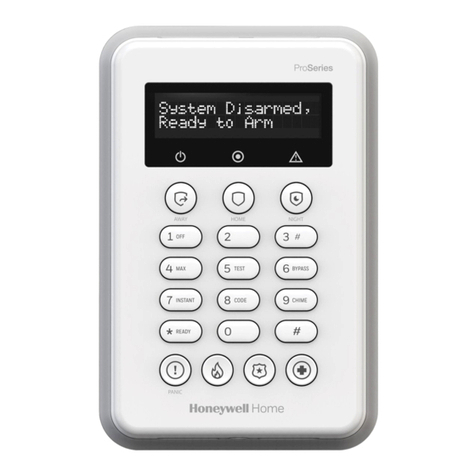
resideo
resideo Honeywell Home PROSIXLCDKP Series Installation and setup guide
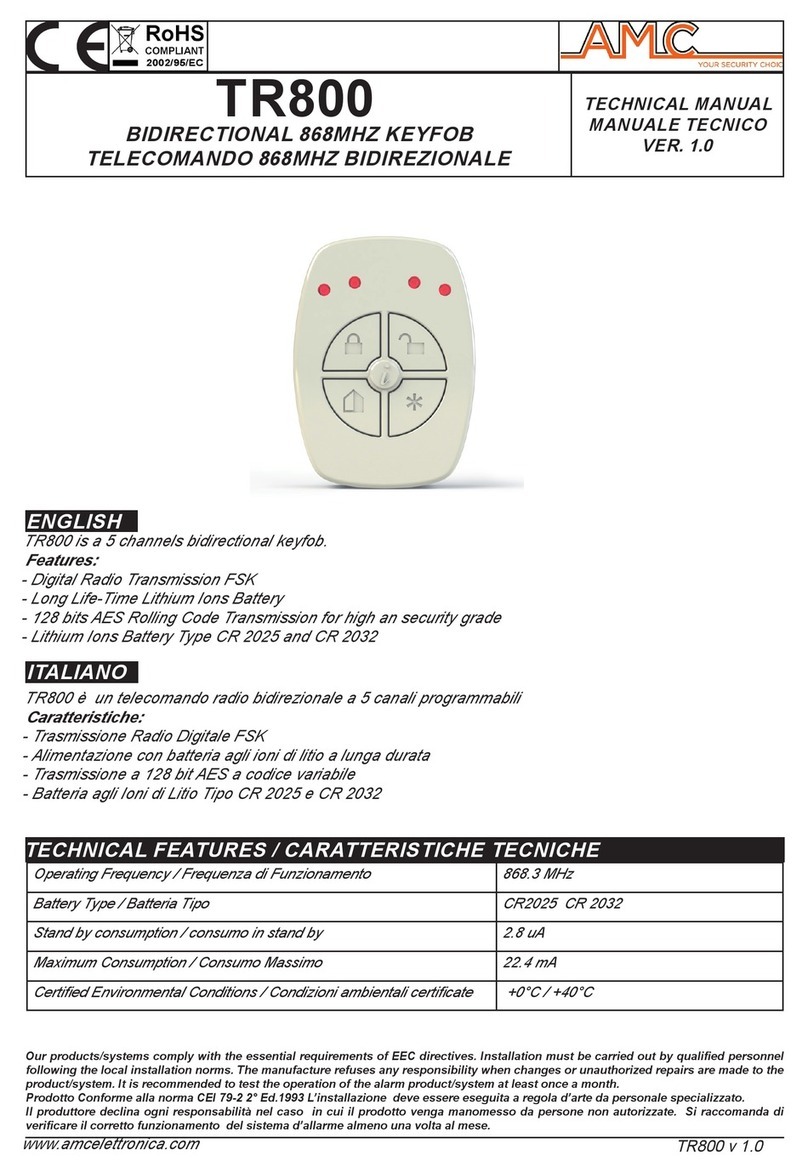
AMC
AMC TR800 Technical manual
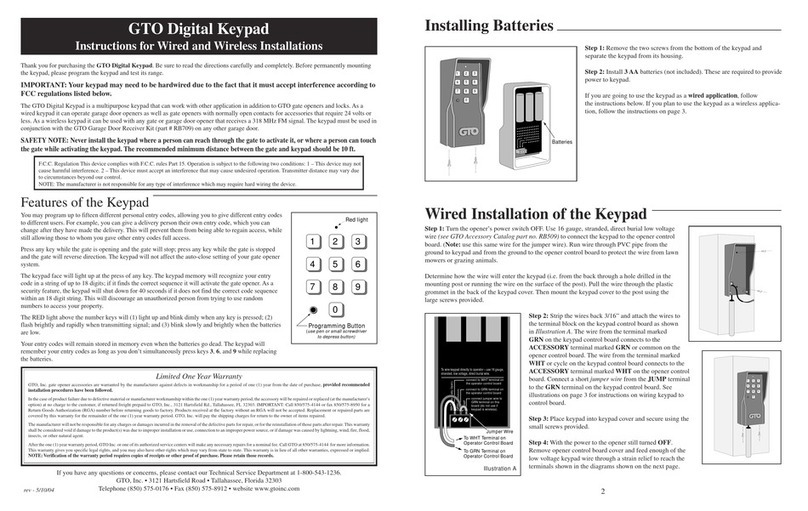
GTO
GTO Digital Keypad Instructions for installations
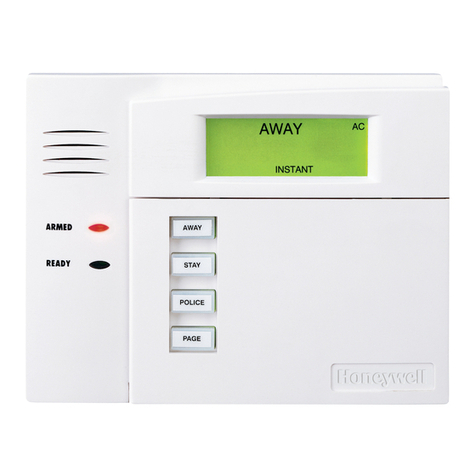
Honeywell
Honeywell ADEMCO 6150RF Installation and setup guide
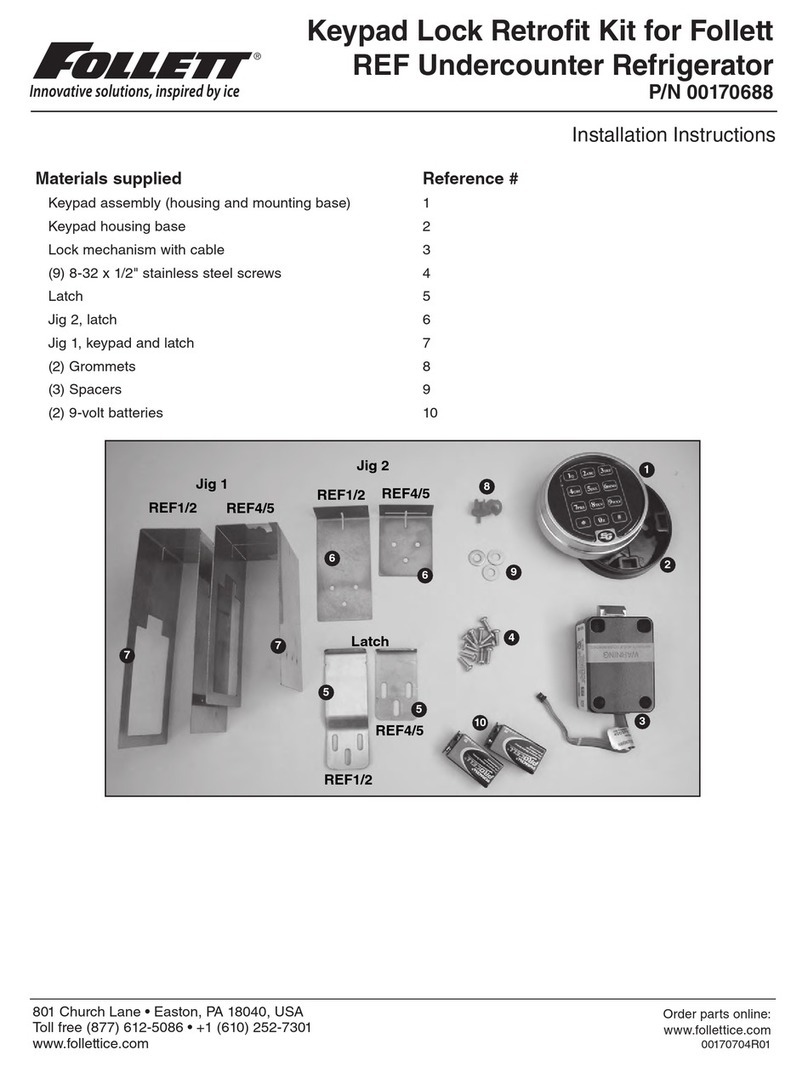
Follett
Follett 00170688 installation instructions

jablotron
jablotron KB-2051 manual



